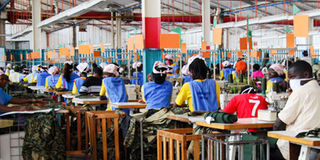Government planning to revive cotton, textile sector

Uganda’s cotton, textiles and apparel sector has suffered years of neglect thus registered stagnated or retrogressive growth. FILE PHOTO
What you need to know:
- According to Diana Mulili, the director business development and innovations at Msingi, a not for profit organisation based in Nairobi, they are working with governments in the region to create industries for future jobs to curtail unemployment in the region.
Kampala. Government has identified cotton, textiles and apparel sectors to tap into its high potential for value addition, foreign investment and job creation.
Uganda is now working on a new strategy to revamp the sector to benefit from the booming global market.
The cotton, textiles and apparel sector ranks high under the third edition of the National Development Plan to be launched later this year.
The Development Plan - a comprehensive sector development strategy for the cotton value chain - will be developed under the National Planning Authority (NPA).
The NPA is working with Msingi East Africa as the lead in the project, which in turn has contracted consultancy firm Bradan Consulting Services to formulate the new strategy.
In a presentation at a recent stakeholders’ meeting, Msingi East Africa said the global apparel manufacturing market was worth $785.9b in 2018.
But Uganda’s cotton, textiles and apparel earnings totalled just $22m (Shs82b) of that, with the European Union being the main importer.
Lint dominated and only 12 per cent of the 37,000 tonnes of cotton lint that Uganda produced during the 2017/18 season was consumed locally.
While neighbours such as Ethiopia and Kenya have annually on average grossed between $221.5m and $436.5m respectively from exports through the US-sponsored Africa Growth and Opportunity Act (Agoa) in the decade to 2017, Uganda’s fortunes have been muted.
The country’s average annual earnings under the scheme averaged just $56 million over the same period with clothing, textiles and apparels exports contributing nothing.
The new strategy is therefore expected to refocus the underexploited Agoa. Although Agoa represents a huge opportunity for Uganda, its prospects in the past have been hampered by a number of policy and market issues.
Exports have been dominated by low-volume products such as handicraft and interior décor.
Seeking to create jobs
According to Diana Mulili, the director business development and innovations at Msingi, a not for profit organisation based in Nairobi, they are working with governments in the region to create industries for future jobs to curtail unemployment in the region.
The organisation has been engaging different actors across the region to discuss what needs to be done to kick-start and revive sectors such as the cotton, textiles and apparel industry to create jobs.




